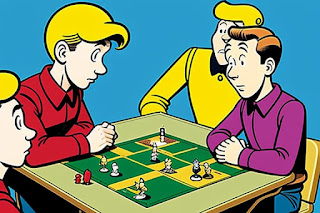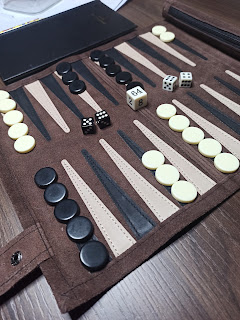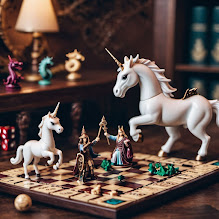Stress significantly impacts our
overall well-being. It’s not merely a mental phenomenon. When stress becomes
overwhelming, our sleep suffers, and the quality of rest we manage to get is
disrupted. Additionally, handling even minor day-to-day challenges becomes more
difficult. We may find ourselves becoming irritable and snapping at
well-wishers. Stress acts as an unhealthy toxin, altering our thought processes
and actively hastening the ageing process.
In practical terms, when we encounter situations that trigger the “fight or flight” response, our bodies release several hormones such as Adrenaline, Norepinephrine, and Cortisol, into our bloodstream. While Adrenaline acts swiftly, Cortisol comes into play when we continually focus on stressors. Excessive Cortisol negatively affects our immune system, raises blood pressure and blood sugar levels, and contributes to obesity. Therefore, it’s crucial to actively manage stress regularly. Specifically, if we recognise that a particular stressor won’t recur significantly or significantly impact our lives, we should learn to let it go and carry on with our daily routines.
While we encounter various
stressors, both real and imagined, there exist methods purportedly designed to
alleviate them. However, many of these approaches feel forced, overly
intricate, and distinctly unfamiliar. An effective stress reliever should be
something that comes naturally to us, resonating with our emotional and
cognitive essence. To discover what truly works, let’s reflect on a time when
stressors, in all their manifestations, were largely unknown: our childhood.
As kids we start off in life with
fresh eyes, the world is indeed a marvellous and new place. We reach out
to observe patterns, sounds, shapes, and substances. We taste, feel, smell, hear
and touch objects to come to terms with our surroundings. We would not yet know
what stress is because nothing within our primal nature asks us to shoulder the
gravitas of being mortal or responsible adults. We simply “are” and in that
state of grace, we reach out playing with all the world has to offer. The key
term here is play.
In the early stages of life,
“play” is an individual pursuit, a simple exploration filled with surprises and
wonder. Here, the term “solitary” isn’t meant negatively; rather, it represents
a crucial phase in a child’s personal development. Each action unfolds
organically, guided by simple and elementary rules. Play serves as a pathway to
understanding, encouraging discovery, and nurturing the young mind. Have you
ever observed toddlers gleefully grabbing objects and depositing them into a
box or container, only to empty the receptacle and start anew? That seemingly
repetitive act is, in fact, a game for the child. As the child grows,
interactions extend beyond themselves. The urge to communicate becomes
irresistible, and this newfound ability to connect becomes an integral part of
their playful engagement with the world.
Likewise, have you ever observed
how young pre-schoolers interact with their peers on a playground? Although
they may be complete strangers, they readily engage in uncomplicated
play—running together around the playground, exploring jungle gyms, or participating
in other games. Their innocence renders them completely unaware of race,
colour, creed, or social status, eliminating any potential stressors. For them,
the joy lies in the simple act of communication and play, often culminating in
communal, exuberant laughter that emanates from the depths of their youthful selves.
This is what we need to recapture
as adults, this sense of peace, a state of bliss we might have forgotten all
about as we progress through our lives. True, we cannot undo our
responsibilities or forget our concerns, but we can strive to bring ourselves time
and time again into a state of grace. The means to achieve this needs to be
rooted in what constitutes our very basic nature. That same nature which we
expressed without inhibitions as kids.
At a very basic level, we all need to fulfil our need to communicate meaningfully, to interact with like-minded people within a friendly environment or context. In addition, our nature leads us to pursue challenges that are within our grasp or capabilities and then to share our accomplishments with those we care about. We want our “eureka” moments to be part of a greater goal that in turn makes us feel we are contributing towards a larger goal or objective. These things, these moments bring peace and fulfilment. For these reasons, any activity understood to help us manage our stress needs to be affiliated with or at least promote these very basic needs.
Playing board games within a
friendly environment can help reduce stress, improve our mood, and promote
social connections. These social and emotional benefits contribute
substantially towards promoting mental health at all ages, but they can be
especially beneficial for older adults who may be at risk for isolation and
loneliness. When board games are approached in a structured manner, they can
offer a clean space that does away with negative stressors.
So far, I have labelled all
stress-inducing circumstances as being negative, but we must understand that
not all stress is indeed harmful or to be avoided. Certain stressors help us
maintain a healthy tension such as those motivators that push us towards a
desirable goal or outcome. There are other factors that we need to consider when
trying to determine the optimal level of stress required to reach a goal. This is because the perception of stress-inducing circumstances will vary from person
to person. Some persons can shoulder a substantial amount of stress and not
suffer any physical or mental duress, whereas others would immediately fold as
soon as the first few stressors take effect. Regardless we need to appreciate
that a good, moderate or manageable amount of stress can help us evolve and
grow as individuals.
Board games offer various
cognitive benefits to those who play them with some regularity. In fact, board
games have been found to help improve memory, concentration, problem-solving
skills, and strategic thinking. These cognitive skills are important for everyone
regardless of age, but they become especially important as we grow older.
Studies have likewise shown that playing board games can help to reduce the
risk of developing dementia and Alzheimer's. If you have time, have a look at
his paper (https://jamanetwork.com/journals/jamanetworkopen/fullarticle/2807256).
Ultimately board games can offer
players a fun and engaging activity that can help sustain mental agility over
time. Unfortunately, some intelligent adults may be hesitant to indulge in
board games because they perceive them as being childish or boring. This could
not be further from the truth, especially nowadays that we have ample access to
games of varying degrees of complexity and subject matter.
While
I don’t intend to criticise those who dismiss games, I find fault with a
society that perpetuates such views. Our brains are inherently wired to thrive
when exposed to novel stimuli. The more mental stimulation we receive, the
greater the network of connections our brains develop over time. As we age, we
increasingly rely on this intricate web of interconnectivity. At a neural
level, this network must be cultivated and sustained through continuous
exposure to fresh stimuli.
Think
of it like a sapling receiving a steady drip feed. To see that sapling grow into a robust, towering tree, you must maintain that nourishing drip
consistently over time. Close off the supply, and the sapling may wither or if
luck favours, merely remain stunted.
Admittedly board games or card games are not the only way to stem the tide of Alzheimer's, but they do offer significant help. Aerobic activity is equally important as it facilitates the flow of oxygen to the brain so if you can get it, do. A simple 30-minute, brisk walk three times a week can do miracles towards flushing toxins out of your system.
On a
personal level, I must admit that learning a new board game is a welcome
challenge. In my experience, even a medium-difficulty, entry-level game can
still be a fantastic experience. I currently have close to 100 games in my
collection and yet there are a handful of them that I play repeatedly. I learnt
their rules and their nuances and it's therefore relatively easy to bring them
to the table. The advantage of bringing them to the table is that I don't need
to wrestle with the rules and focus squarely on playing a good game. Yet
nothing beats reading through and understanding how a new game plays out. A new
game offers a deeper level of engagement including the need to memorise new
mechanisms.
Even
if I watch a playthrough video and study the rules, I will still make mistakes
when I play a game for the first time. It is helpful to play with experienced
players who can help me learn the game and identify my mistakes. I have come to
appreciate the importance of having a good gamer at the table.
Board games are more than just a fun way to pass the time. They can also teach us valuable life lessons, such as how to deal with losses and celebrate wins, how to think critically and act strategically, and how to interact with others in new and interesting ways. Additionally, board games can help us get to know our fellow players better and build stronger relationships.
In other words, board games can help us grow as individuals and improve our social skills. They can also teach us how to overcome challenges and achieve our goals.
Here are some tips for getting the most out of board gaming for stress management and mental health: -
- Choose games that offer you a challenge.
- Set aside time each week or perhaps monthly to play board games.
- Play in a relaxed and comfortable setting, don’t rush things.
- Make sure to take breaks if you start to feel stressed during play.
- Focus on having fun and connecting with the people you are playing with.
Board gaming is a great way to improve your mental health and well-being. If you are looking for a fun and rewarding activity to do with friends and family, I encourage you to give it a try.













.jpeg)
.jpeg)















